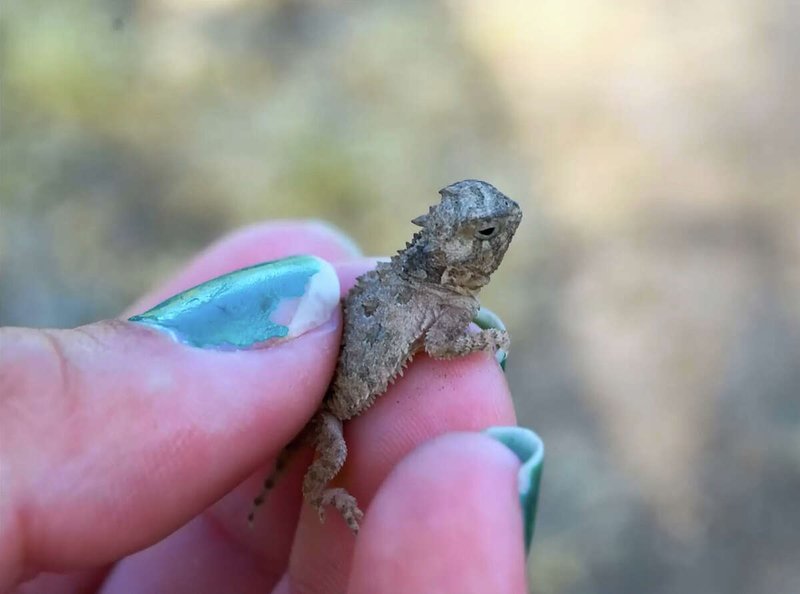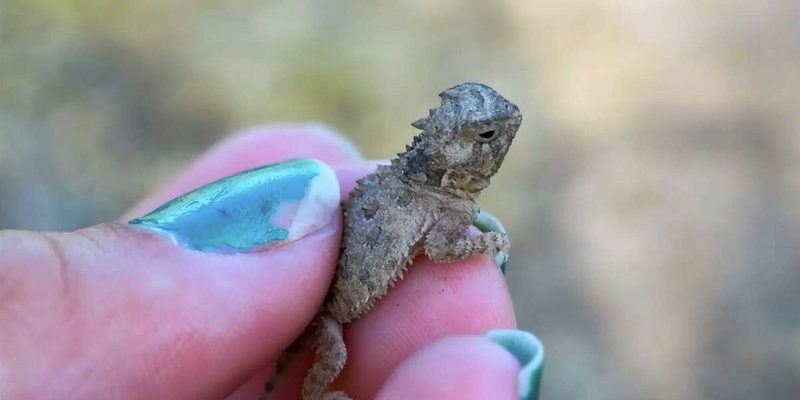
Horned lizards, or “horny toads” as some folks call them, don’t spend much time tending to their young. Instead, they focus on survival right from the start. It’s almost as if they’re saying, “You’re on your own, kid!” But the journey to adulthood for these lizards involves some amazing adaptations and behaviors. So, let’s dig deeper into how horned lizards raise their young in the wild and what makes their methods so intriguing.
The Parenting Style of Horned Lizards
Horned lizards are pretty much hands-off when it comes to parenting. After laying their eggs in the ground, which is usually in late spring or early summer, the female lizard leaves them behind—just like that! This might sound a bit harsh, but it’s the norm for many reptiles. Instead of nurturing their offspring, horned lizards rely on nature to take its course.
The female horned lizard usually lays around 15 to 30 eggs in a burrow that’s been carefully chosen for temperature and moisture. She digs a shallow nest and places the eggs inside, covering them up to protect them from predators. This process can be compared to planting seeds in a garden; the lizard hopes that the right conditions will lead to hatching, but she doesn’t stick around to see what happens next.
This strategy helps horned lizards avoid the constant threats of predators. It’s a risky game, but those little hatchlings have some impressive survival instincts right from the get-go. They’re born ready to fend for themselves!
What Happens After Hatching?
Once the eggs hatch—usually after about two months—the tiny horned lizards emerge from the ground each around the size of a pea. Can you imagine being so small in a big, wild world? It’s both exciting and dangerous. These hatchlings face numerous challenges right away, from finding food to staying safe from predators.
The first thing they need to do is find food. Horned lizards primarily eat ants, which might seem like a strange diet, but it works for them. When they hatch, they instinctively start hunting for these tiny insects, even though they’re not much bigger than the ants themselves. Talk about a challenge!
To stay safe, these little lizards have a unique defense mechanism. If they feel threatened, they can flatten their bodies and blend into the ground, making them look like a rock or a clump of dirt. This camouflage is crucial for their survival and helps them avoid becoming someone else’s lunch.
Growth and Development
As horned lizards grow, they’ll go through a series of molts, shedding their skin to allow for their expanding bodies. This process is crucial because it gives them the chance to grow stronger and larger while also getting rid of parasites that cling to their skin. Each molt is like a little milestone, marking their progress in the wild.
During this time, they continue to rely on their instinctual behaviors. They might seek out shelter under rocks or plants to avoid the heat of the day. Staying out of direct sunlight helps them conserve energy and stay hydrated, which is key in their dry habitats.
It’s interesting how these little creatures adapt to their environments. The more they learn to navigate the world around them, the better their chances of survival become. This growth phase can last several months, during which they develop their characteristic spiky appearance that helps ward off predators.
Survival Strategies in the Wild
Horned lizards have evolved a range of survival strategies. Besides their ability to camouflage, they also have some defensive tactics up their sleeves. When threatened, a horned lizard can puff itself up, making it harder for predators to swallow them. Some species can even squirt blood from their eyes as a last-ditch defense! This bizarre behavior might sound gross, but it can be effective in startling a predator and giving the lizard time to escape.
Another fascinating aspect of horned lizard survival is how they manage hydration. Living in arid environments, they often rely on the dew that forms on plants in the morning. They can drink water by absorbing it through their skin while basking in the early sunlight. This unique adaptation allows them to thrive even in harsh conditions where water isn’t always readily available.
Let’s not forget about their food preferences too. Their diet of ants means they can often find plenty of meals nearby. Since ants are abundant, these lizards don’t have to venture far and risk exposing themselves to danger—it’s like having an all-you-can-eat buffet right in their backyard.
Role of Temperature and Environment
Temperature plays a significant role in the life cycle of horned lizards. The warmth of the soil not only helps incubate the eggs but also affects the sex of the hatchlings. Warmer temperatures during incubation can lead to more female hatchlings, while cooler conditions may produce more males. This interesting sex determination process can influence the future generation of horned lizards.
Once they’ve hatched, the right environmental conditions continue to be essential for their growth and survival. Horned lizards thrive in habitats with plenty of sunshine and sparse vegetation, like deserts and dry scrublands. The right mix of sun and shade is vital for regulating their body temperature, allowing them to be active during the warmer parts of the day.
In addition, the availability of food sources and hiding spots also affect their survival rates. Habitats that provide ample ants for food, along with safe spaces to hide from predators, are ideal for raising young lizards. Unfortunately, changing climates and human activities can disrupt these natural habitats, making it harder for horned lizards to thrive.
Horned lizards have a fascinating way of bringing their young into the world. Their approach might seem unorthodox to us, but it works well in the wild. From laying eggs and relying on environmental conditions to adapting to threats, these lizards exhibit a host of remarkable behaviors.
It’s a thrilling reminder of nature’s resilience and how life finds a way, even in the toughest conditions. As adorable as they are spunky, horned lizards embody the spirit of survival in the wild—doing what it takes to raise the next generation, even if that means letting them figure things out on their own.

